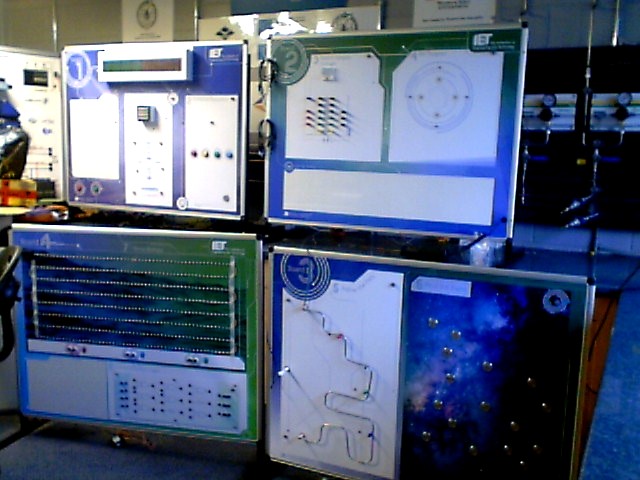IET Puzzle Panels
 The IET have sponsored the design of five table-top stand-alone panels, each featuring two STEM activities, and prototypes have been constructed (the pic shows four boards close to completion).
The IET have sponsored the design of five table-top stand-alone panels, each featuring two STEM activities, and prototypes have been constructed (the pic shows four boards close to completion).
Students/pupils working as teams start on the first panel with a time of 2,000 seconds allocated. They progressively move along 5 panels, with the aim of completing the 10 tasks before the clock times out. If they succeed, a latch on a clear Perspex box on the last panel is activated, and the door opens to give them access to the prize.
The tasks are designed under the following constraints:
(1) Activities must be familiar but novel, should be intuitive with an interesting twist (no instructions need to be provided)
(2) Can be solved by ‘trial-and-error’ but the use of strategy will save a lot of time
(3) Tasks can be selected for primary school- secondary school – university level difficulty under main computer control
(4) There should be no computer/keyboard/screen tasks
(5) Task details will change on each run so that the puzzles can be attempted many times
The following topics were chosen:
Task 1: Number supplied on display; feed it through a calculation flowchart and enter the correct number. Different flowcharts available.
Task 2: 4 coloured lights lit in a mathematical sequence. Predict and enter next 2 in the sequence.
Task 3: Voltage displayed (e.g. 3.5). Combine resistors to generate that voltage from 12V.
Task 4: Use laser gun to hit more than one target (prisms, diff grating, mirrors, beam splitters and other components supplied)
Task 5: Learn about AC induction by moving loop along wire; for children doubles up as buzz wire activity.
Task 6: Identify light pattern by pressing corresponding buttons – astronomy theme; For children, find hidden pairs memory game.
Task 7: Control pulses of energy with ultrasonic sensors- teaches about transverse waves, longitudinal waves, resonance/standing waves, dispersion; For children, make nice patterns.
Task 8: Combinational logic problems.
Task 9: Alter length of pendulum to match frequency of flashing light. Equation supplied.
Task 10: Sequence of musical notes – correctly identify if notes higher or lower than previous (Parson’s code).
Some of the activities are simulated below. These will allow students to practice before facing the real panels.
| Tasks | ||
| 1. | Understanding Flowcharts | |
| 2. | Light Sequences | |
| 3. | Ohm's law | |
| 4. | Connecting Logic Gates |